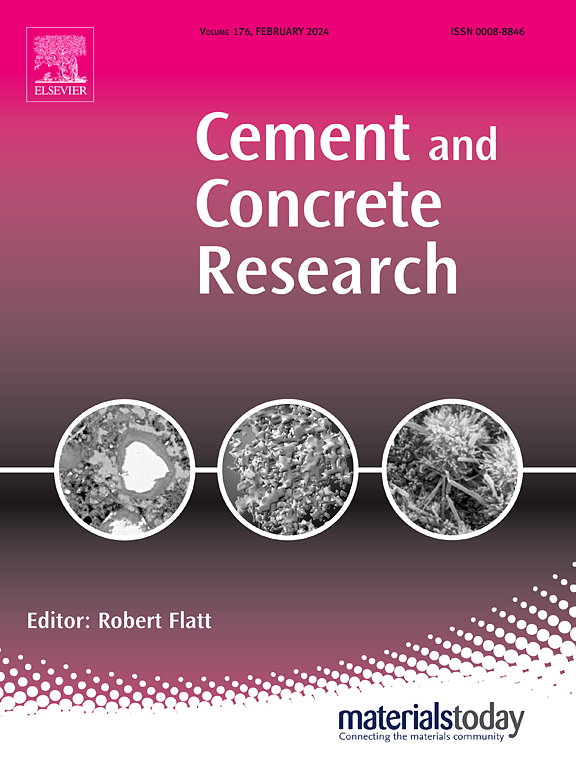Effect of coarse aggregate on acoustoelastic effect in concrete
IF 13.1
1区 工程技术
Q1 CONSTRUCTION & BUILDING TECHNOLOGY
引用次数: 0
Abstract
The acoustoelastic technique exhibits substantial potential for in-situ stress measurement in concrete. However, concrete, being a complex multiphase material, is subject to various influencing factors on its acoustoelastic properties, encompassing material strength, aggregate size, porosity, temperature, and humidity. A comprehensive understanding of how these factors influence the acoustoelastic characteristics of concrete is imperative for the advancement of acoustoelastic technology in engineering applications. This study concentrates specifically on the coarse aggregate of concrete, a crucial component forming the material's skeleton, and investigates the influence of its placement and size on acoustoelastic coefficient (AEC) of concrete. 25 two-dimensional mesoscale finite element models with varied maximum aggregate diameters were established to explore the influence of aggregates and excitation frequency on acoustoelastic effect in concrete. To streamline calculations, the equivalent elastic constant method was proposed to simulate the acoustoelastic effect in concrete. AECs for all models were determined using the stretching technique. The results indicate that the AEC of concrete tends to rise with increasing ultrasonic excitation frequency. Moreover, both the particle size and placement of aggregates have limited impact on acoustoelastic effect of P-waves in concrete. To substantiate this conclusion, empirical tests were conducted on 15 concrete prism specimens, featuring five distinct aggregate gradations. The experimental outcomes aligned with the numerical predictions, corroborating the findings.
粗骨料对混凝土声弹效应的影响
声弹性技术在混凝土地应力测量中显示出巨大的潜力。然而,混凝土作为一种复杂的多相材料,其声弹性性能受到多种因素的影响,包括材料强度、骨料尺寸、孔隙率、温度和湿度。全面了解这些因素如何影响混凝土的声弹性特性,对于声弹性技术在工程应用中的进步是必不可少的。本研究特别关注混凝土的粗骨料,这是形成材料骨架的关键组成部分,并研究了其放置和尺寸对混凝土声弹性系数(AEC)的影响。建立了25个不同最大骨料直径的二维中尺度有限元模型,探讨了骨料和激励频率对混凝土声弹效应的影响。为了简化计算,提出了等效弹性常数法来模拟混凝土中的声弹效应。所有模型的aec均采用拉伸技术测定。结果表明:随着超声激励频率的增加,混凝土的AEC有增大的趋势;此外,粒径和骨料的放置对混凝土中纵波的声弹效应影响有限。为了证实这一结论,对15个混凝土棱柱试件进行了经验试验,具有5种不同的骨料级配。实验结果与数值预测一致,证实了研究结果。
本文章由计算机程序翻译,如有差异,请以英文原文为准。
求助全文
约1分钟内获得全文
求助全文
来源期刊

Cement and Concrete Research
工程技术-材料科学:综合
CiteScore
20.90
自引率
12.30%
发文量
318
审稿时长
53 days
期刊介绍:
Cement and Concrete Research is dedicated to publishing top-notch research on the materials science and engineering of cement, cement composites, mortars, concrete, and related materials incorporating cement or other mineral binders. The journal prioritizes reporting significant findings in research on the properties and performance of cementitious materials. It also covers novel experimental techniques, the latest analytical and modeling methods, examination and diagnosis of actual cement and concrete structures, and the exploration of potential improvements in materials.
 求助内容:
求助内容: 应助结果提醒方式:
应助结果提醒方式:


